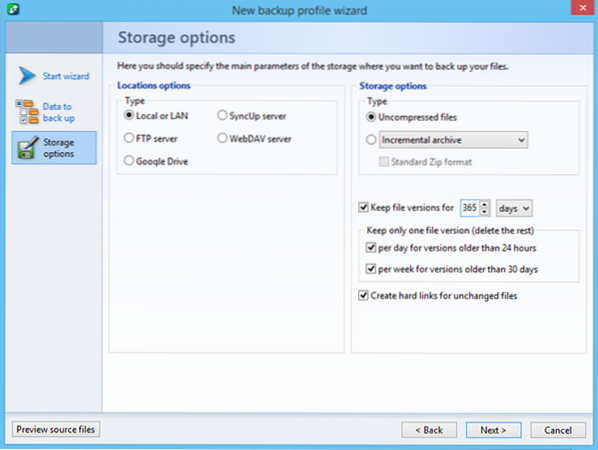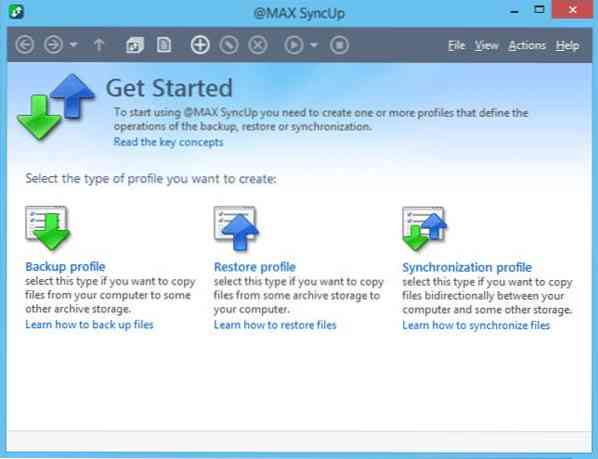Some of you may have heard about the built-in backup application in Mac OS, called the Time Machine. Mac users like to believe it's the perfect backup solution. This opinion might be too optimistic, but it does contain a grain of truth. Time Machine provides a really good backup strategy.
Here's how it works: Each backup copy is created on an external or network drive as a folder whose name matches the date of the backup. Each folder contains a snapshot of the data at the moment of creating the backup copy, with full preservation of the file structure. By default, Time Machine keeps hourly backups for the last 24 hours, daily backups for the last month, and weekly backups for the rest. For example, you can easily cancel any unwanted changes you made in your presentation in the morning, or open a week-old version of a project. To do that, you don't have to do any complicated actions with archives, launch some special applications, and so on. Simply use any file manager to find the folder containing the backup copy for the needed date. There's more to come. To use the disk space efficiently, the following method is used: Backup copies are actually created only for those files that have changed after the previous backup; for any unmodified files, hard links are created, which let you refer to the same file from different folders and occupy very little disk space. As a result, Time Machine's backups are not only easy to use but also save your disk space.
@MAX SyncUp review
Curiously enough, it has always been hard to use a similar backup strategy in Windows 8. But now you can have it, too, thanks to the recent release of a new version of @MAX SyncUp. Among other things, this outstanding application can make Time Machine-like backups.
@MAX Sync Up is a free backup software that lets you create Time Machine like backups in Windows, sync Computers over the Internet, sync Files and Folders, Back Up Data to Google Drive, and more!
Create Time Machine-like backups in Windows

It's easy to configure it: After installing @MAX SyncUp, launch the New Profile Wizard, select folders with the data that should be backed up, specify the type of storage as uncompressed files, specify the storage depth for backups, specify the path for creating backup copies, and so on. For this type of backup, you can find step-by-step instructions, including a video, on the application's website.
It should be noted that, unlike Time Machine, @MAX SyncUp currently doesn't let you configure automatic removal of old backup copies in case of disk space shortage. You have to explicitly specify the period of time to keep the backup copies. (A disk space shortage will produce an error message.) On the one hand, it is a limitation; on the other hand, it's the only way to make sure that the required storage depth is achieved.
Sync Computers over the Internet
If you're like most computer users, there are times when you will need to make sure that a file you change on one PC is updated on other machines somewhere else. Maybe you need to make sure that your home office desktop and the laptop you travel with have the same files, or keep everyone on your team on one page by updating everyone after someone makes a change to your presentation. There are many times when you need to make sure that some of your files are shared by multiple systems.
There are plenty of utilities that will sync computers on the same network. However, when computers are separated by long distances, most users, including professionals, use cloud storage services like Dropbox or Google Drive. Cloud services store your data on computers in a data center. Cloud services are reliable because they maintain multiple copies of your data in data centers around the world. However, there are some major problems with keeping your data “in the cloud.”
- Cloud service providers have to pay for their computers, and so you have to pay them if you store more than a few gigabytes of data.
- You can only reach your data through the service provider's network, and even the biggest providers sometimes get slowed down by high demand.
- Big data centers are tempting targets for people who want to access a lot of other people's information.
You can avoid all these problems by using @MAX SyncUp, a powerful sync and backup utility that allows you to sync computers directly to each other. When you sync computers straight to each other, you cut out the cloud service middleman. Your data only goes where you send it. No one else stores your data, so you don't have to worry about whether other people are keeping it safe, and you don't have to deal with fees or limits on your storage.
Using @Max SyncUp is easy, and you don't need any specialized knowledge of computers or networks to set it up.
- First, install @MAX SyncUp on all the computers you want to sync.
- Second, pick a computer to be the server. The server needs to be on whenever other computers need to sync and it needs to have either a public IP or a dynamic IP address. Almost all home PCs and many office PCs will meet these requirements. A wizard will guide you through each step of the process.
- Third, set up other computers as clients of the @Max SyncUp server. Another wizard will let you select the folders to sync, specify your sync schedule and preferences, and customize your profile.
The most common setting only syncs files when they are changed. This lets you update files on computers all over the world in a few minutes. It also saves resources by only syncing files when they need to be changed, while reducing the load on your network and your computers. @Max SyncUp even has a unique algorithm that identifies the parts of a file that have changed and transfers only part of a file. This means that if you make a couple of small changes to a huge spreadsheet or presentation, you will only have to sync those sections of the file. This drastically reduces the time it takes to sync large files with only a few changes. This algorithm has already been used in RSync, a console app for UNIX systems, but in @MAX SyncUp they have improved it with an updated and user-friendly graphical interface.

@MAX SyncUp also encrypts and compresses transferred data. AES encryption keeps your data protected during the seconds it takes to be transferred between the server and the client. Compression makes the sync process even faster by reducing the amount of data transferred. @MAX SyncUp is the best way to keep your data current on many computers in different places… but it does even more.
@MAX SyncUp is a fully functional backup utility with all the standard features and then some:
- Supports backup on FTP, SFTP, or WebDAV servers.
- Supports Google Drive.
- Creates full and incremental archives.
- Supports data compression and encryption.
- Preserves file and folder permissions.
- Runs as a Windows service.
- Supports Shadow Copy Service.
- Restores single files or a whole system.
- Efficient use of system resources.
- Convenient user interface.
These are only some of the features you get with @Max SyncUp. The program is free for personal non-commercial use. The free version though having the restriction viz. 1 backup or sync per profile, is enough for most regular user, because the profile can include an unlimited number of files. All of the other functions are available in the free version.
You can download it and get more information about this backup software on its home page.

 Phenquestions
Phenquestions


